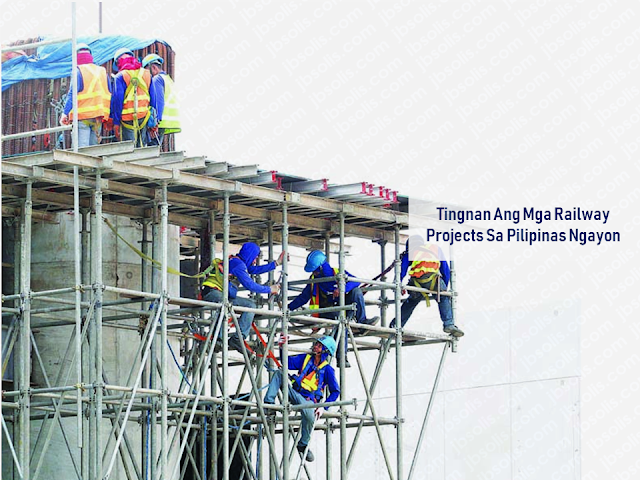Railways have been always proven as the main factor in determining and assuring the fast flow of commerce and trade for ages. The economy and financial progress of countries all over the world greatly depend on how fast they can transport commodities and services throughout the country and its neighbors.
Up to this present time, railways are still playing its great role in many progressive countries in different continents.
In the Philippines, Duterte administration’s Build Build Build program referred to as the “golden age of infrastructure”, started construction of the nation’s first subway system including a number of railway projects.
Up to this present time, railways are still playing its great role in many progressive countries in different continents.
In the Philippines, Duterte administration’s Build Build Build program referred to as the “golden age of infrastructure”, started construction of the nation’s first subway system including a number of railway projects.
These projects include Philippine National Railways (PNR) North Rail, PNR South Rail, the Luzon Spine Expressway and Mindanao Rail. The Build Build Build projects which include all of these has an estimated cost of P3.6 trillion which is expected to raise the contribution of infrastructure spending to GDP (gross domestic product) from 5.4 % in 2017 to 7.4% in 2022.
PNR North Rail, which will spend about P225 million, extending to 100 kilometers connecting Manila’s Tutuban Station to Pampanga’s Clark International Airport. The Tutuban-Clark journey that will last for about 55 minutes is expected to service around 35,000 passengers everyday.
PNR South Rail, which will connect Manila with the Bicol region, will be made of two stretches. The first stretch, from Manila to Los Banos - a distance of 75kms – will be able to accommodate up to 400,000 passengers daily upon its completion in 2022.
The Luzon Spine Expressway is a more ambitious undertaking, for it will start in La Union and end in the Bicol region. It will encompass road projects that are already underway – including the project that will link NLEX (the North Luzon Expressway)and SLEX (the South Luzon Expressway). When the Luzon Spine Expressway is completed, travel time between La Union and the Bicol region will be reduced to under 12 hours.
Ads
Mindanao Rail will be a colossal project. For one thing, there is the distance that it will cover: the 2,000 miles between Tagum and the cities of Davao and Digos. For another, there is the project’s price tag: P32 billion. Expected to be completed in 2021, Mindanao Rail will be able to carry 117,000 passengers daily. The travel time between Tagum and Digos will be reduced to just an hour.

These railways and road projects are ambitious but they will do much to increase for the economic development in their coverage areas. Mindanao Rail, in particular, is set to operate in an area that badly needs boosting economic activities.
Ads
However, it's completion target which is expected by 2021is nearly impossible and ambitious.
Will the Build Build Build program be able to beat their due date?
Only four years left in President Duterte’s term. Will the next president carry on with these projects? That is the big question now.


NEDA Approves Mega Manila Subway Project
This is filed under Railways, commerce and trade, Philippines, Duterte, Build Build Build, infrastructure, subway system, railway projects, construction,
Read More:
©2018 THOUGHTSKOTO






